MONT ST. MICHEL,
NORMANDY
An island situated at
the end of a narrow causeway, flooded at high tide. As with so many
locations favored by men or women devoting their lives to their gods,
the geographical location provided safety in its isolation – safety
from without from those who would attack for material envy as
well as safety from inner temptation. The site was removed
from the secular world.
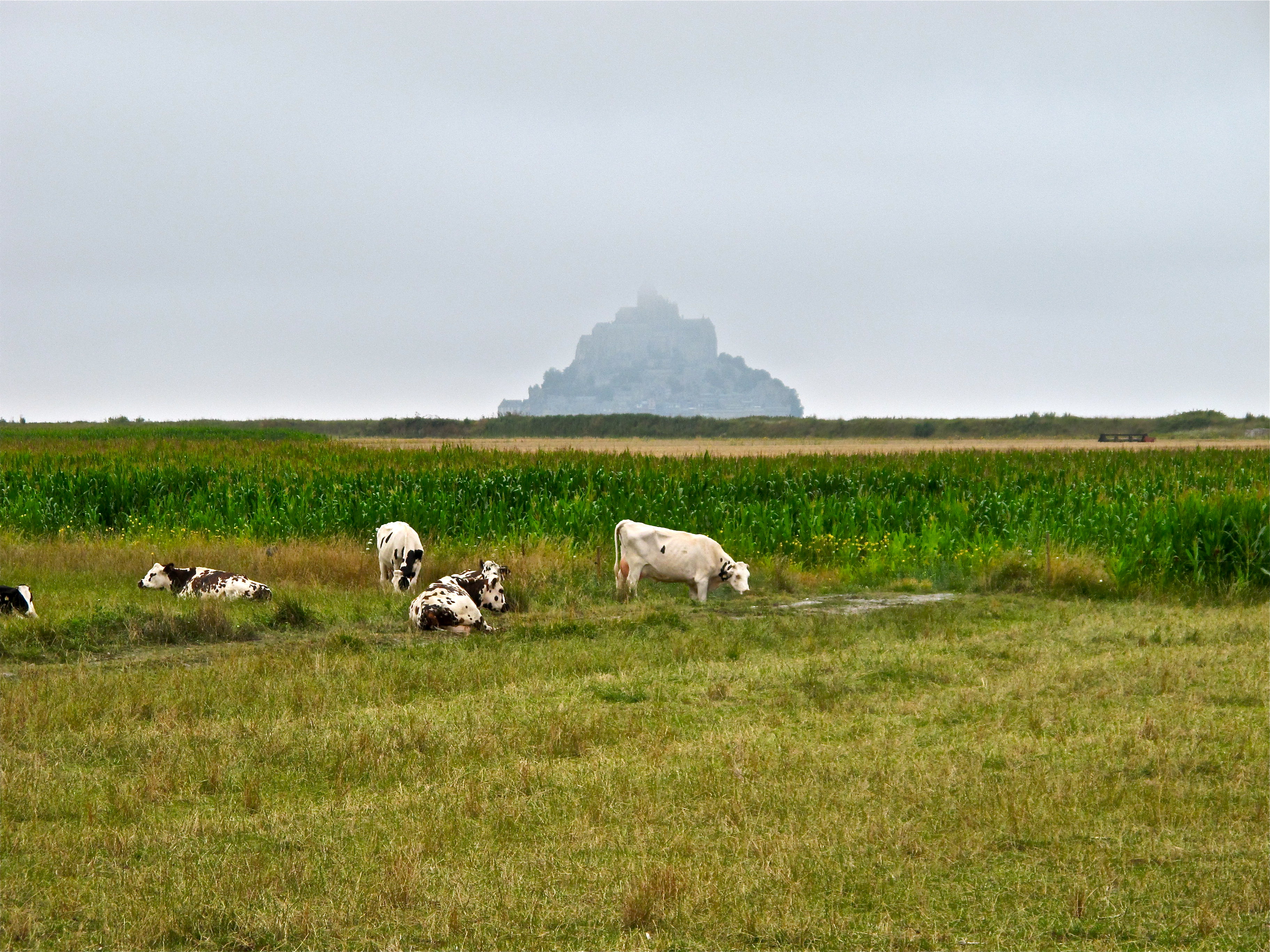

THE ABBEY OF MONT ST.
MICHEL

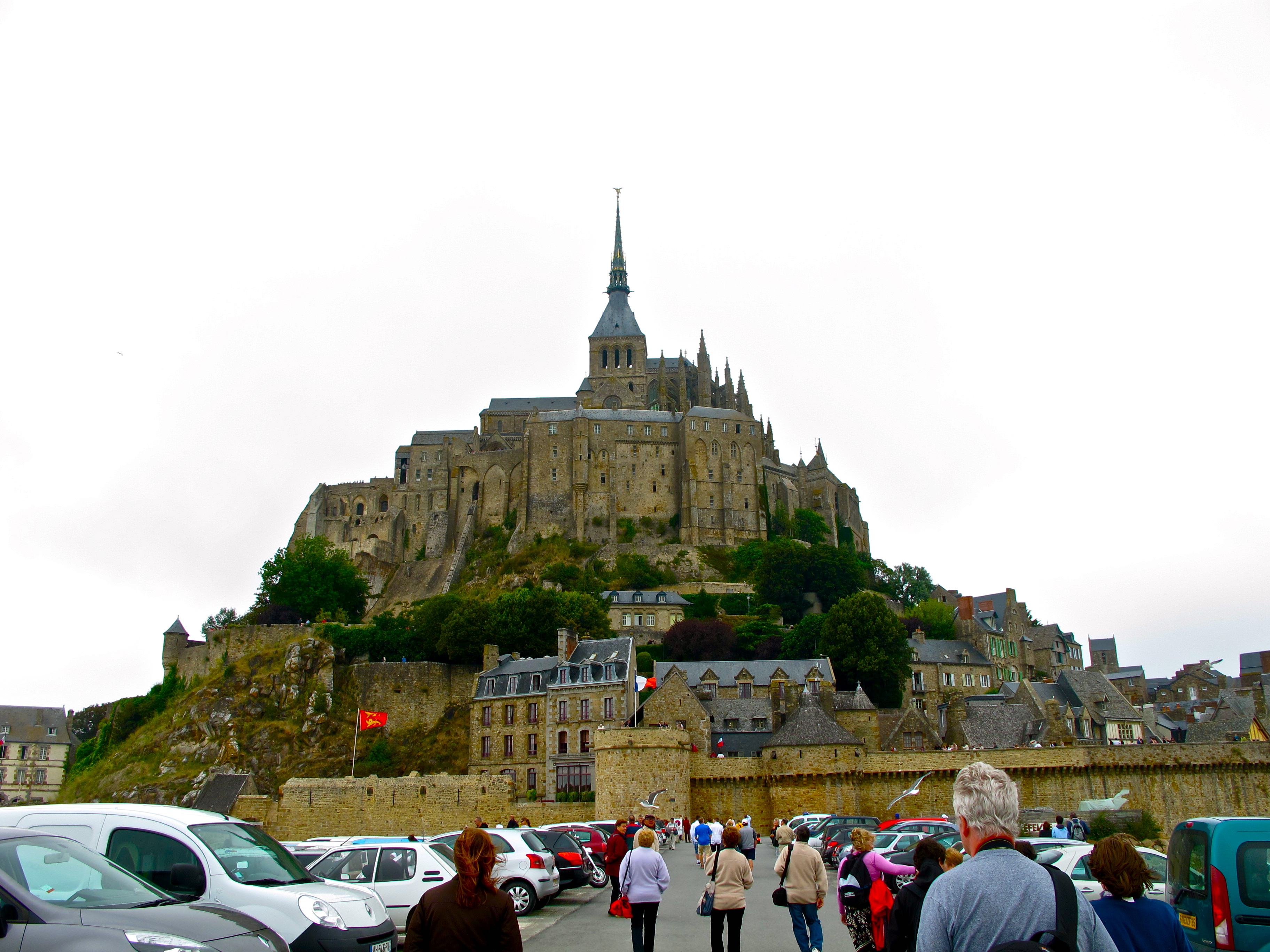
This tiny island is home
to an abbey dedicated to St. Michael by the Archbishop Aubert of
Avranches, in 708. The Archbishop apparently had a vision of St.
Michael.
The earliest buildings
were in the Romanesque character, followed by Gothic construction -
we will point out those features as we move along. There is a rather
typical French transition here, from Medieval to Gothic, and the
newer advanced Gothic construction very much follows in the manner
developed by Bishop Suger at St. Denis. In fact the apse, with its
stained glass windows, is most reminiscent of St. Denis.
The island provides a
natural defense, and the integrity of the Abbey was intact, except
for a period from 1790 until about 1863 when the use as an Abbey was
dissolved; the site even became a prison during that time. Finally,
restoration of the Abbey began, and the site is now a major tourist
attraction - something it had been for centuries, with pilgrims
coming to this shrine throughout the medieval years and onward.
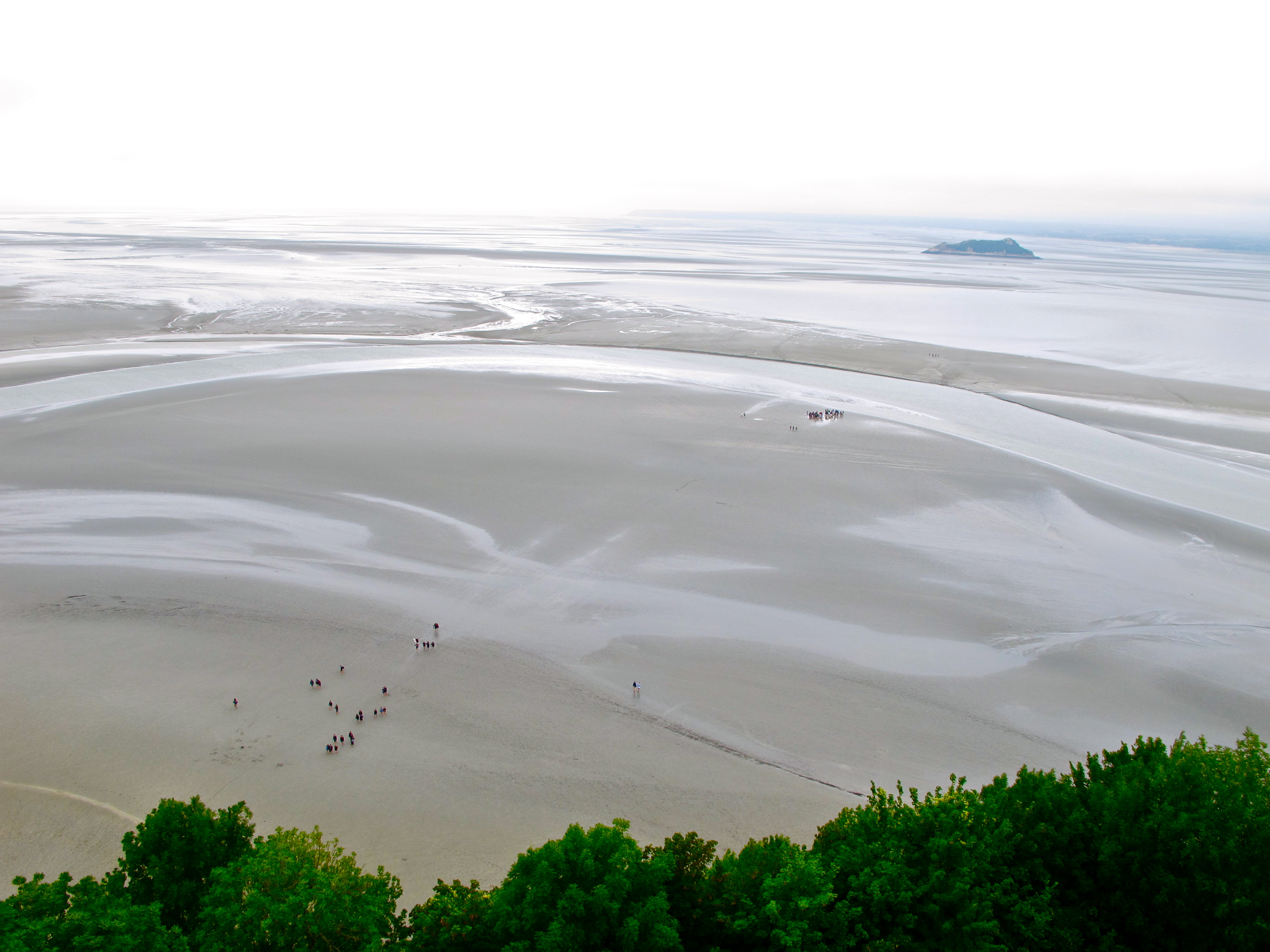
A
curiosity of the site is the fact that tidal changes of the English
Channel are so severe that the causeway leading to the Abbey is often
fully underwater during high tide, especially during days just before
and after a full or new moon. Interestingly, pollution and/or
erosion has cut into this tidal action, and the site is presently
undergoing a clean up, which will bring the flooding (and isolation)
back. The causeway is a recent addition, having been built in 1879;
prior to that time, the island was very clearly just that - an
island!

The
warning sign states: “Caution,
Today this area will be covered by the sea, Please remove your
vehicle before the above closing time.” They
do mean the closing time listed on the sign, and the warning is
intimidating and states truth.
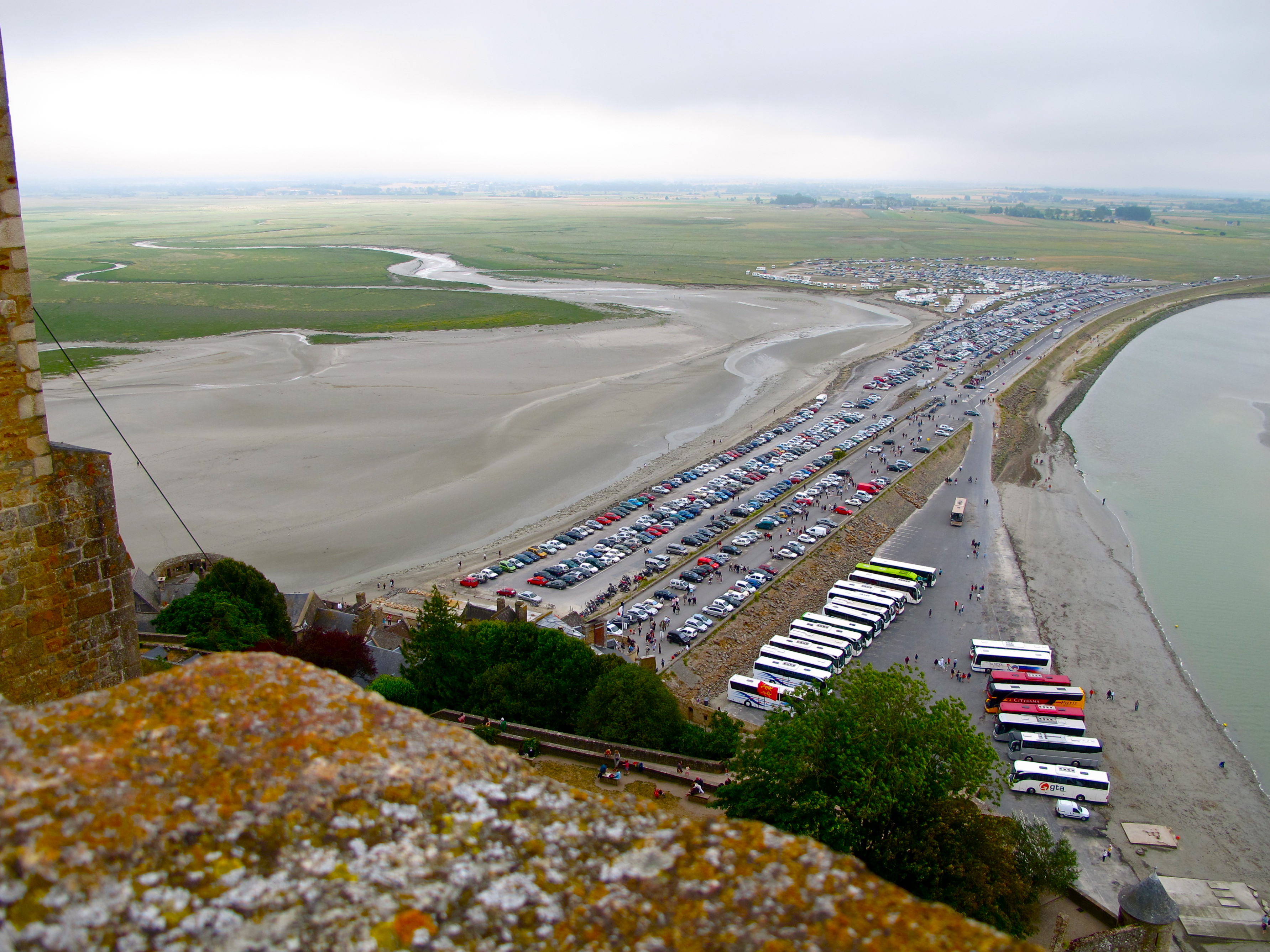
This is a view of the
causeway/parking lot, surrounded by the incoming tidal waters.
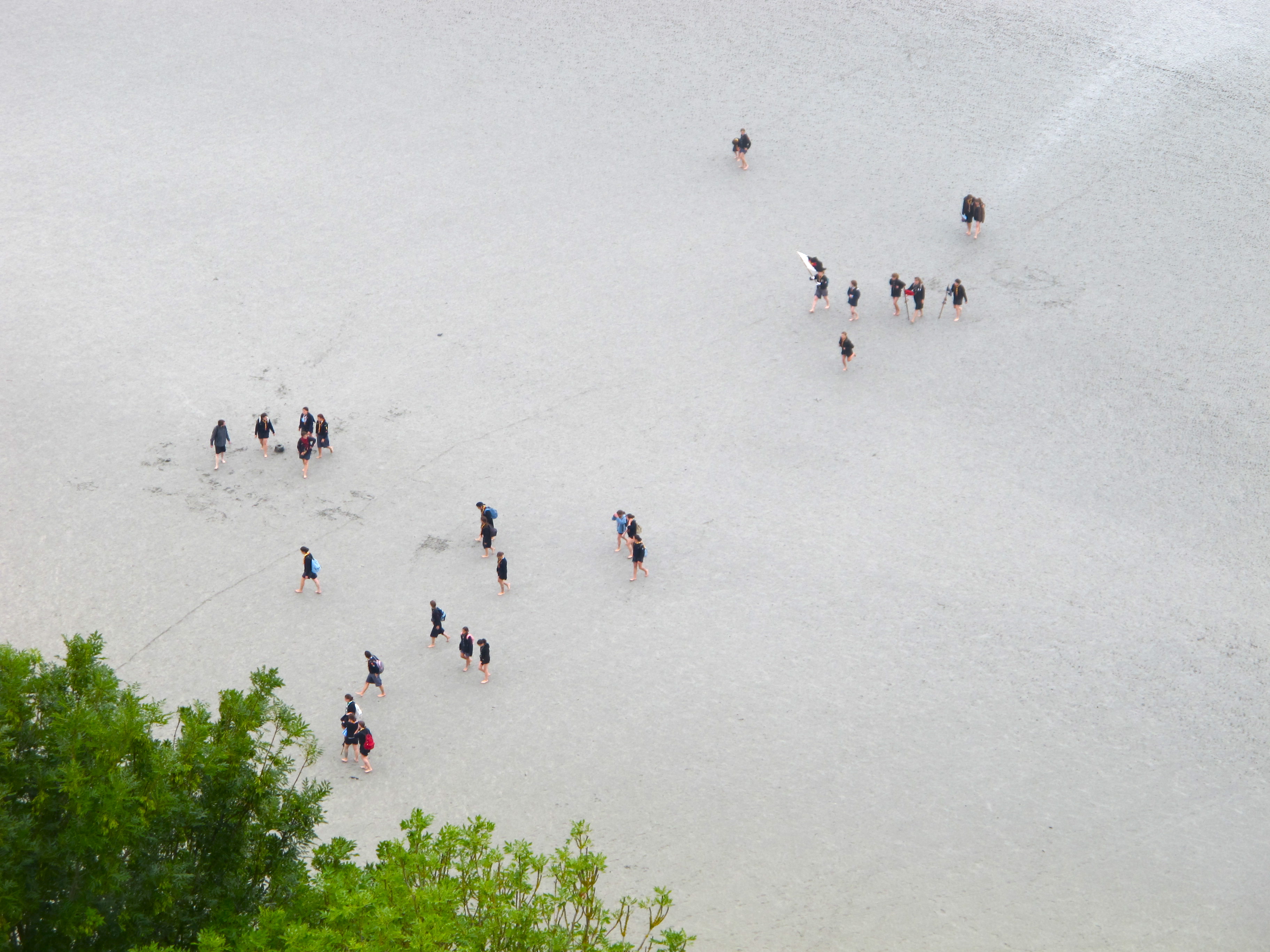

To further illustrate
the situation, visually, these are some views facing the water of the
Atlantic Ocean. The tiny dots are people foolish enough to brave an
incoming tide and quicksand, the latter referred to locally as “wet
sand.”
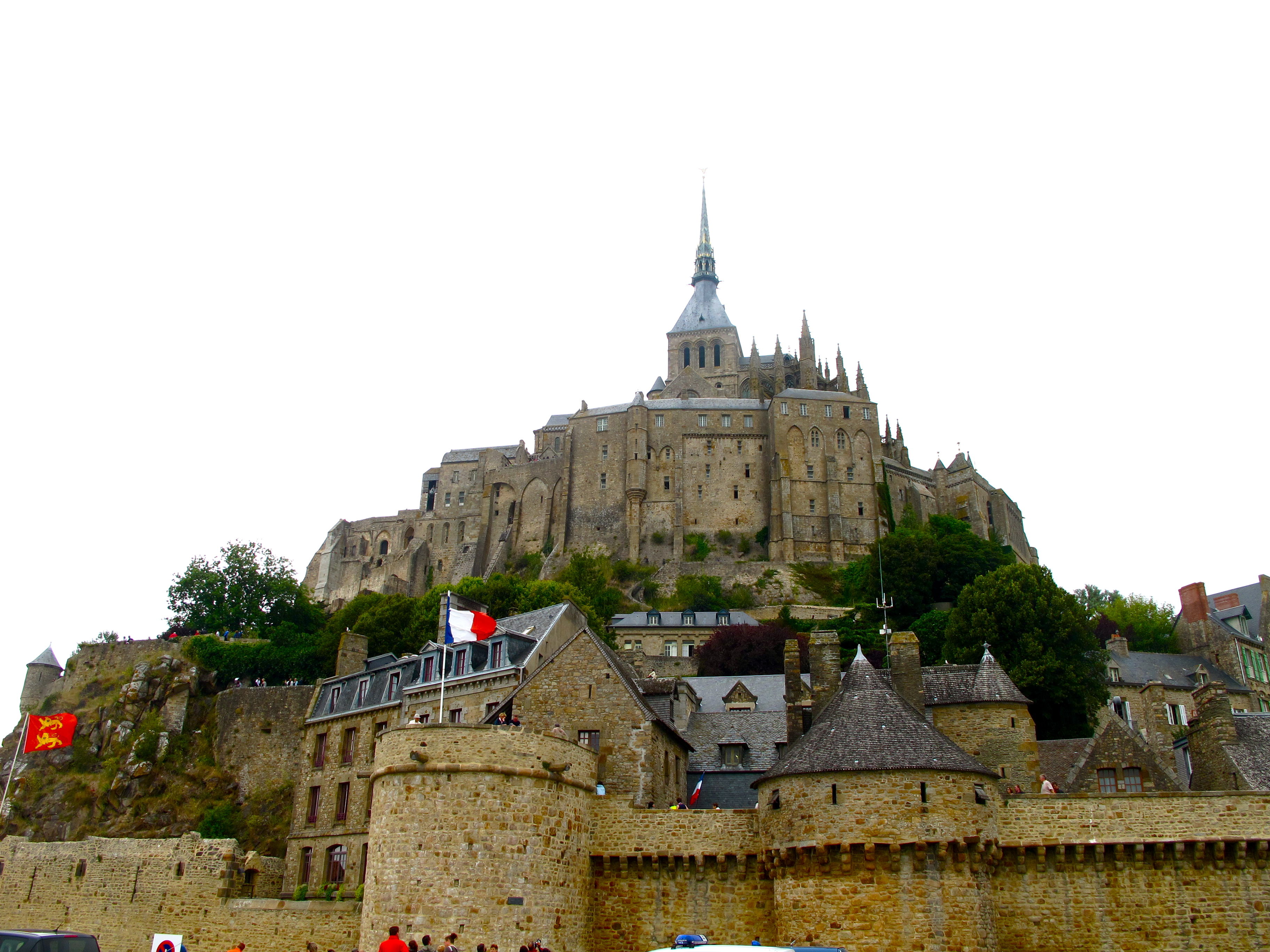
Medieval churches
usually dominated cityscapes, being built on the highest land, and
being taller than any other structure within a town. Here the effect
is of the entire "rock" being a church, with structures
rising to a visual crescendo. There is one twisting, upwardly
winding street with shops, hotels, restaurants, and a small museum.
However, as we approach from the mainland, we see the sculptural
massing as it rises to support the abbey church. We could also view
this as a cascade of stone taking loads from above down to the edges
of the island. In either interpretation, however, the result is what
we can call "organic" architecture. The
structures rise as if naturally growing on the site. It is
something Frank Lloyd Wright was to speak of and popularize in the
20th century. In-between Medieval and the present, Gothic
architecture was a perfect example of such organic development,
structurally; additionally, it looks natural, and it appears
to be growing. The
pyramidal shape is 262 ft. (80 m.) high .
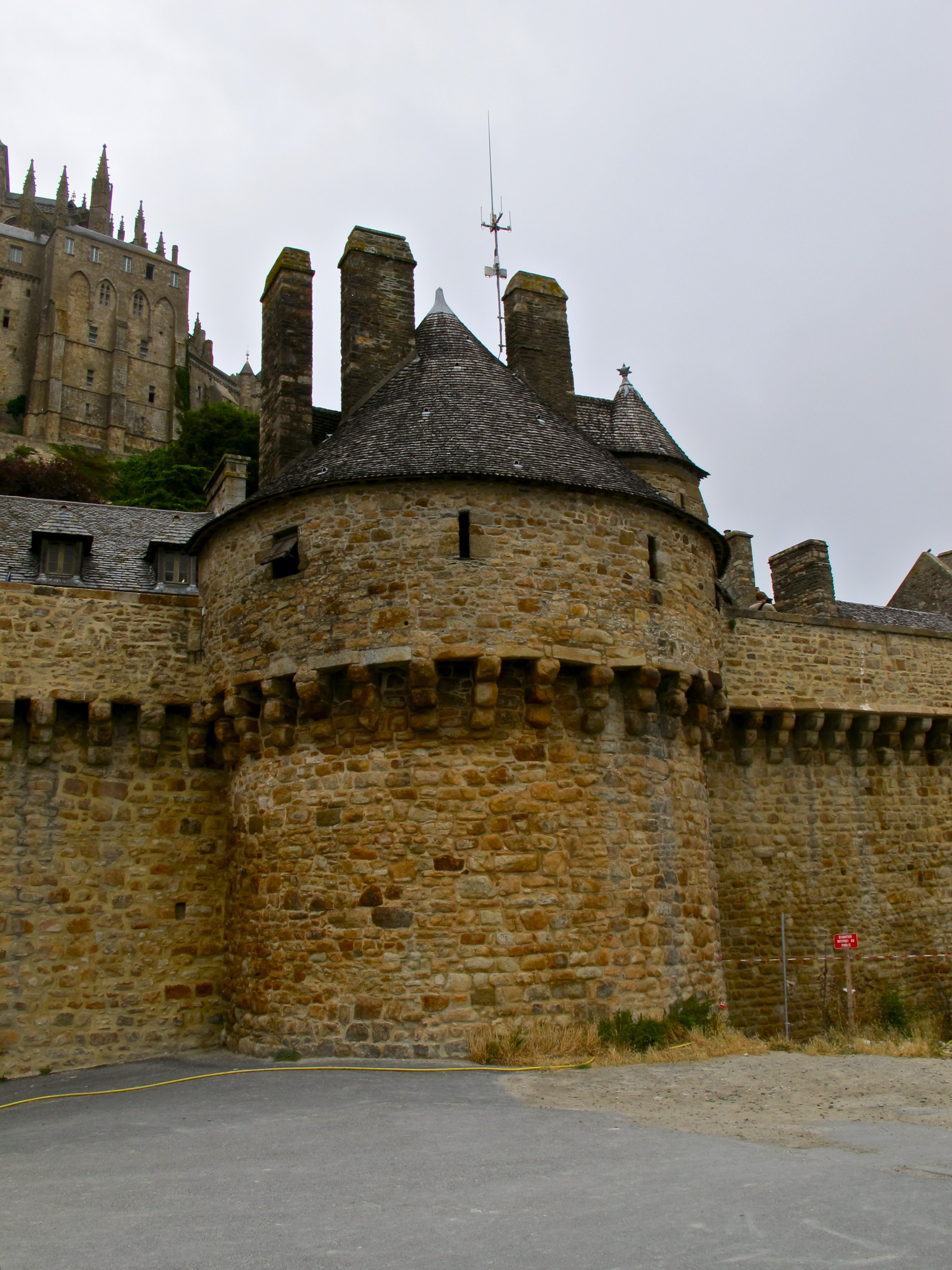
There are a number of
fortifications, growing out of the stone base of the island,
occasionally with rounded turrets (usually for the housing of
guards).
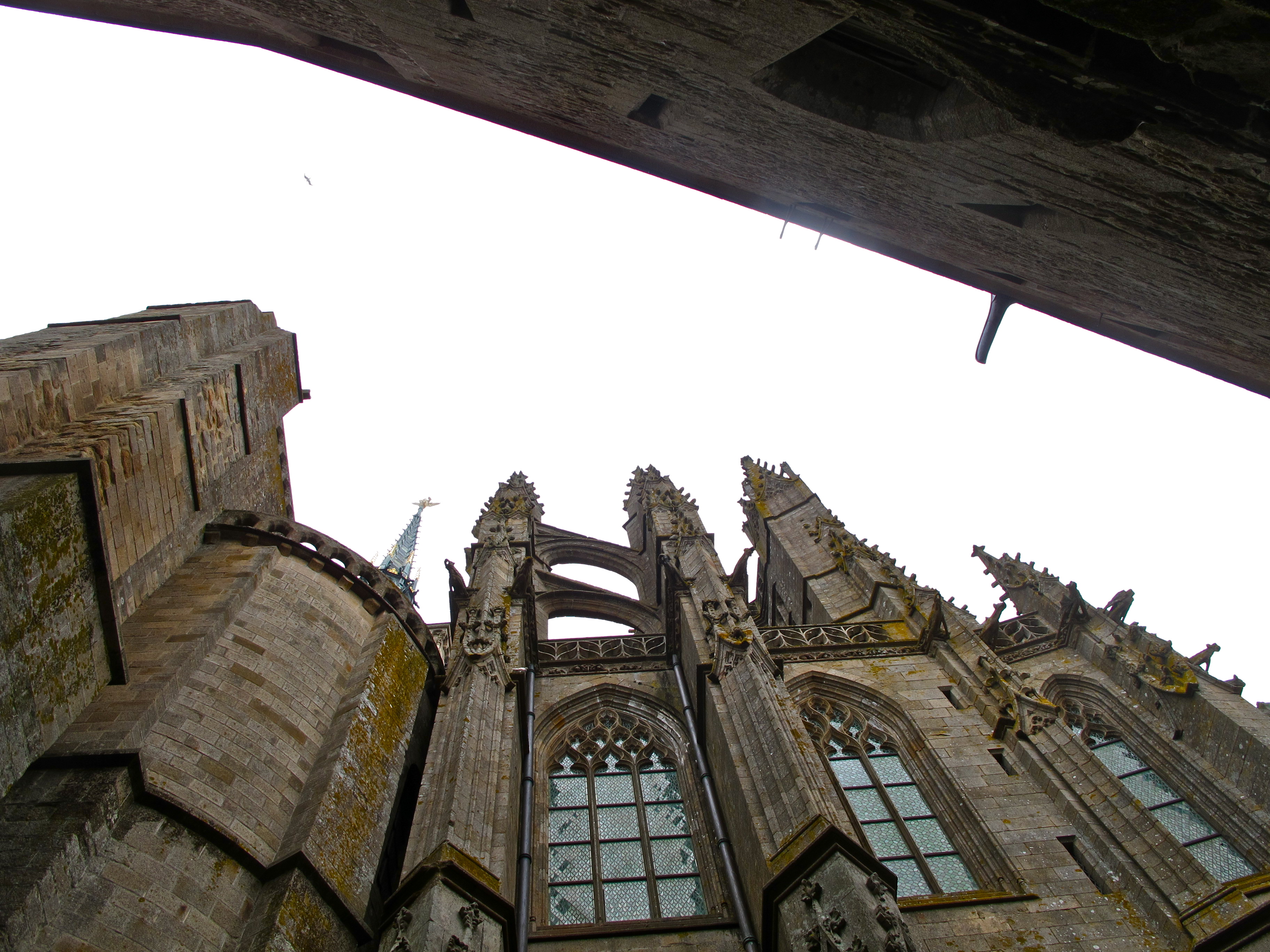
Vertical spires
aid the eye in an upward sweep, but practically they serve as
vertical weights bearing down on the flying buttresses to which they
are attached, sending their forces to the ground.

There are other
verticals working here, namely the buttresses needed to contain the
rather tall walls. These, too, draw the eye ever upwards. Notice
how the buttresses thicken as they approach the ground, gathering
forces from above.
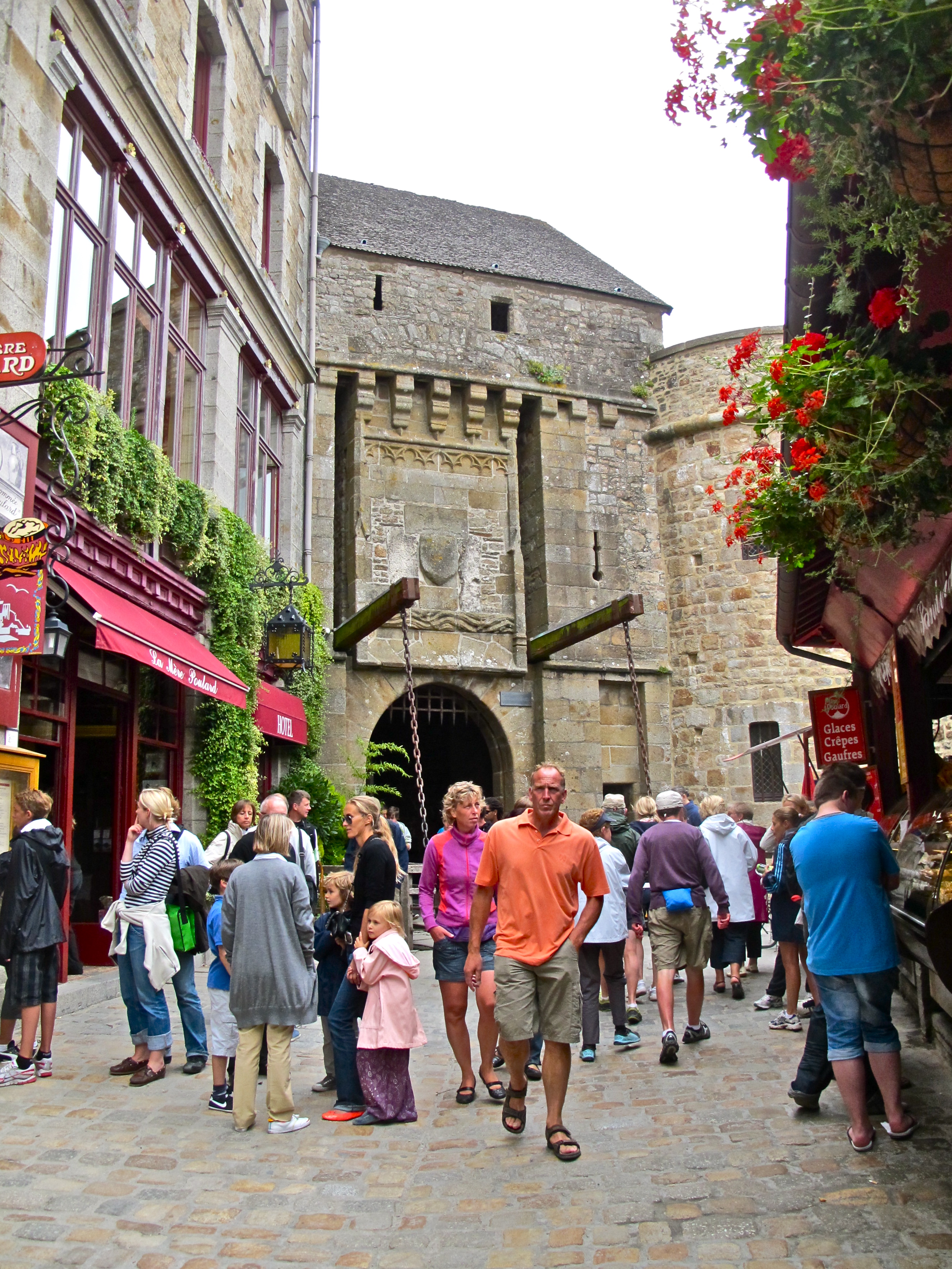
Entering the Porte du
Roi (Doorway of the King), and proceeding on the twisting, winding
street, one is reminded, perhaps in reverse, of a Disney setting -
the place does not seem real.
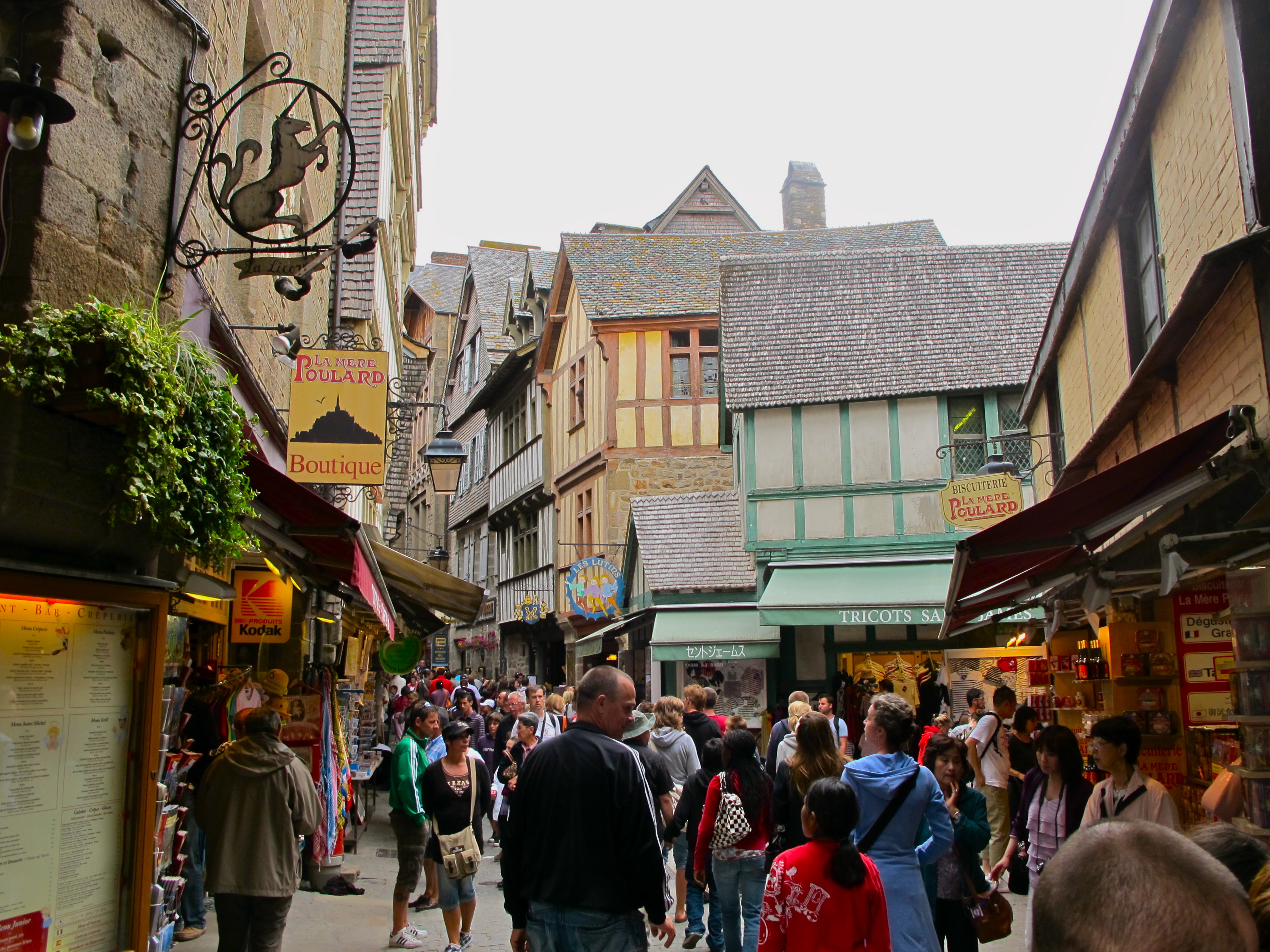
We are in a quaint,
tiny, very crowded village, climbing the only street in town, the
Grande Rue.

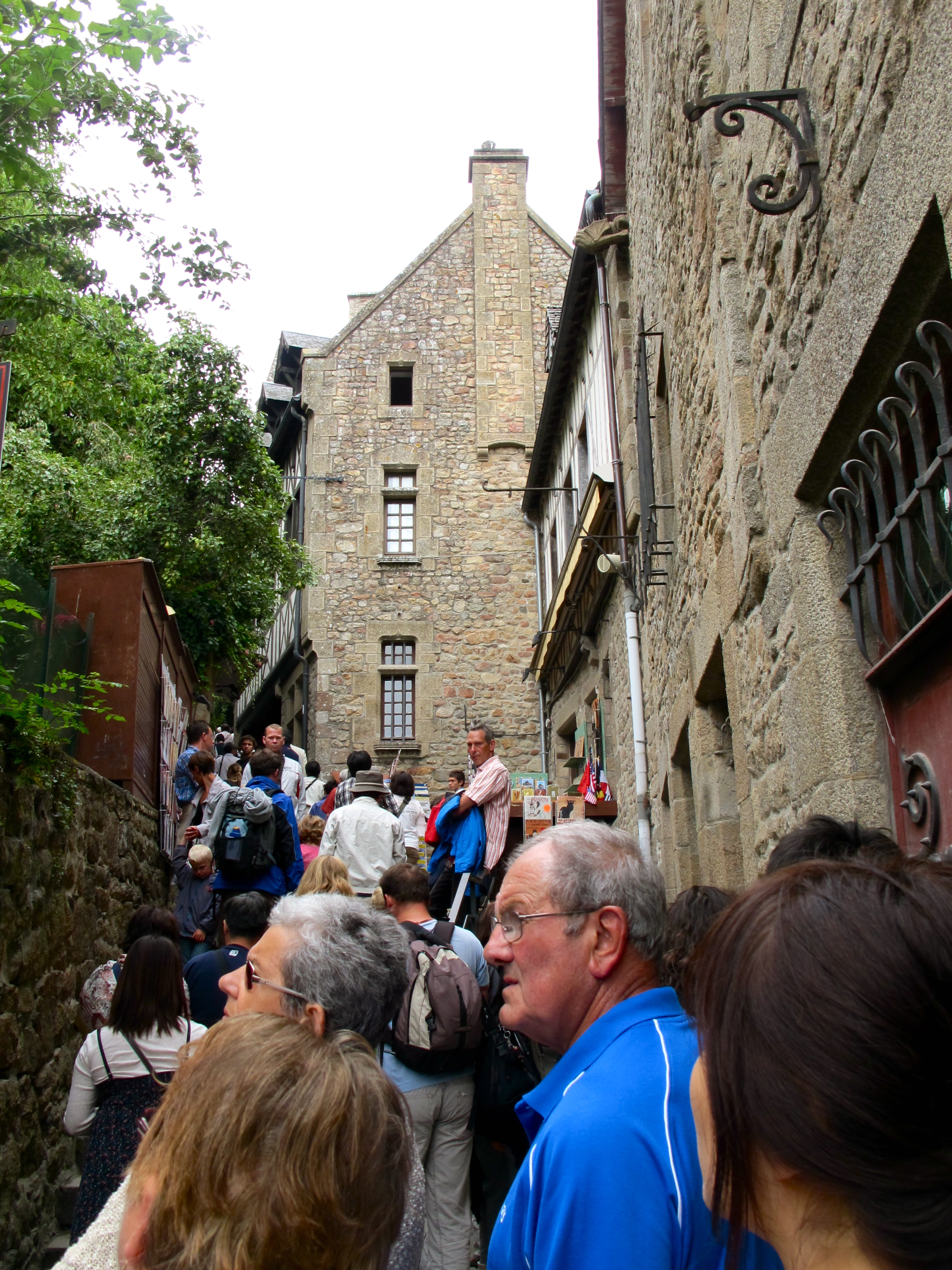
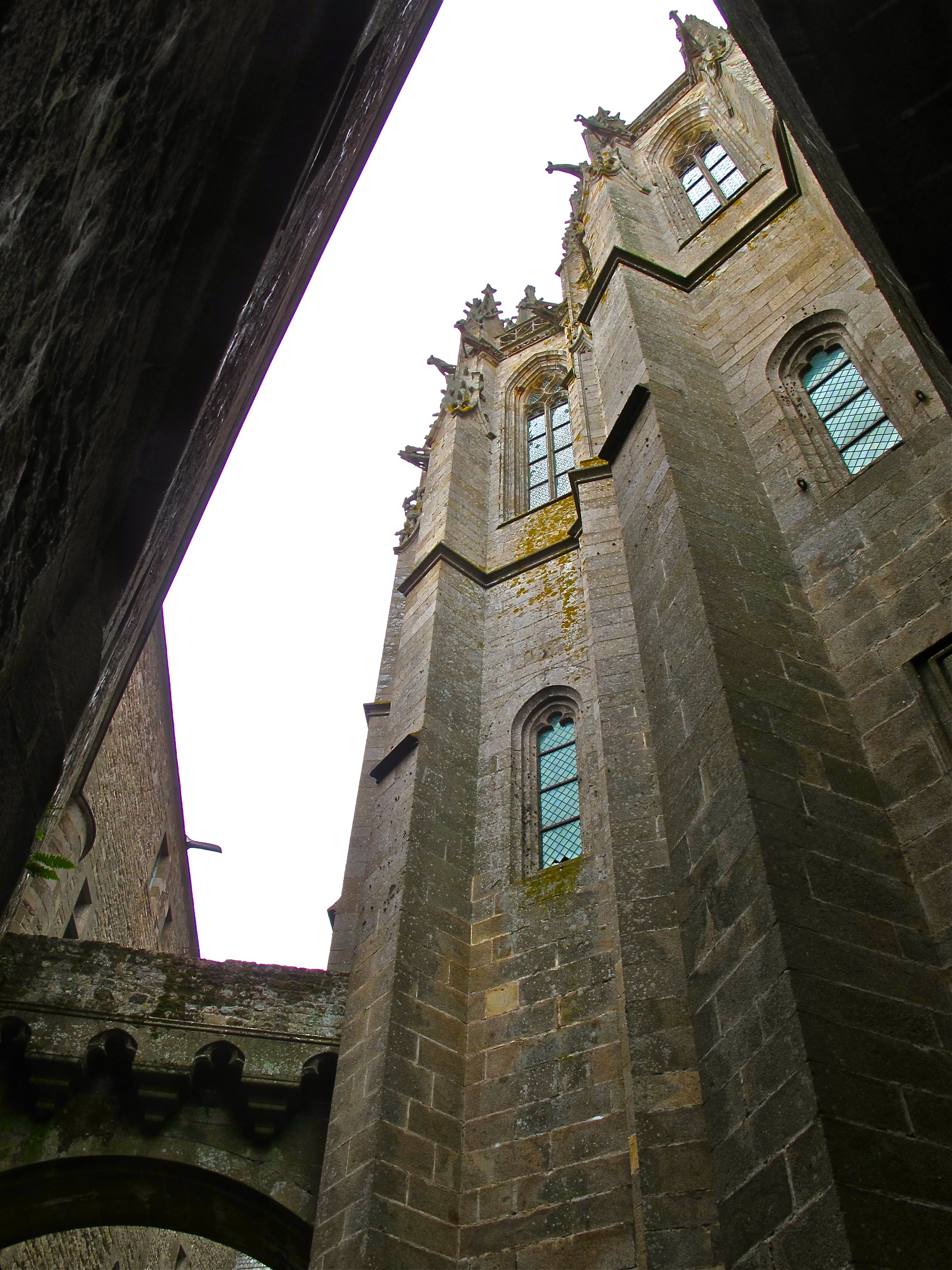
The projecting
waterspouts appear almost like gargoyles, soaring out of the upper
regions of the church, over the heads of the pilgrims (now tourists)
gathering to
approach the church.
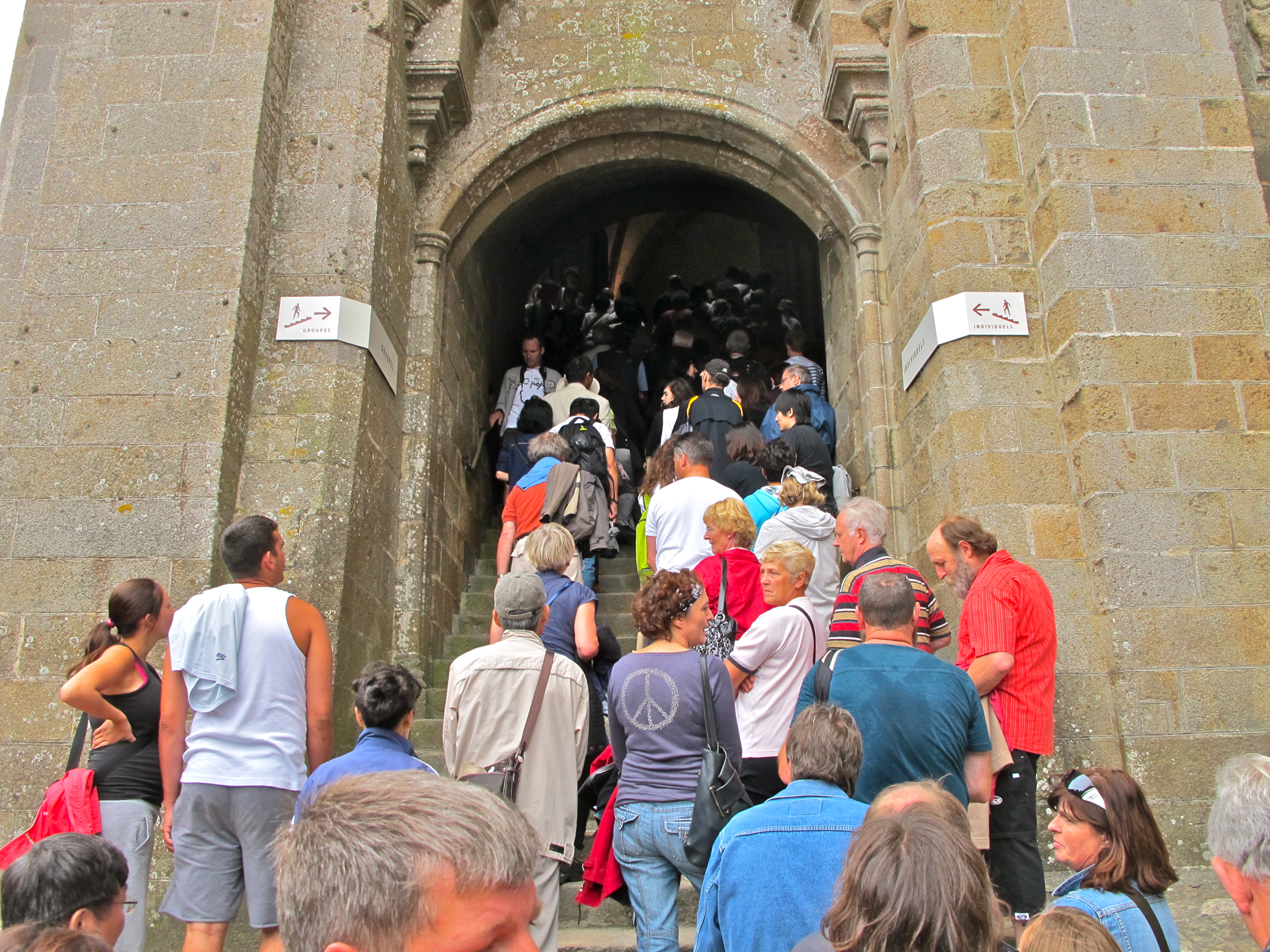
The Romanesque facade of
the entrance to the Abbey is heavy, with minimal openings and
semi-circular openings. Basic construction towards the apse occurred
between the 11th and 13th centuries.

The church itself.
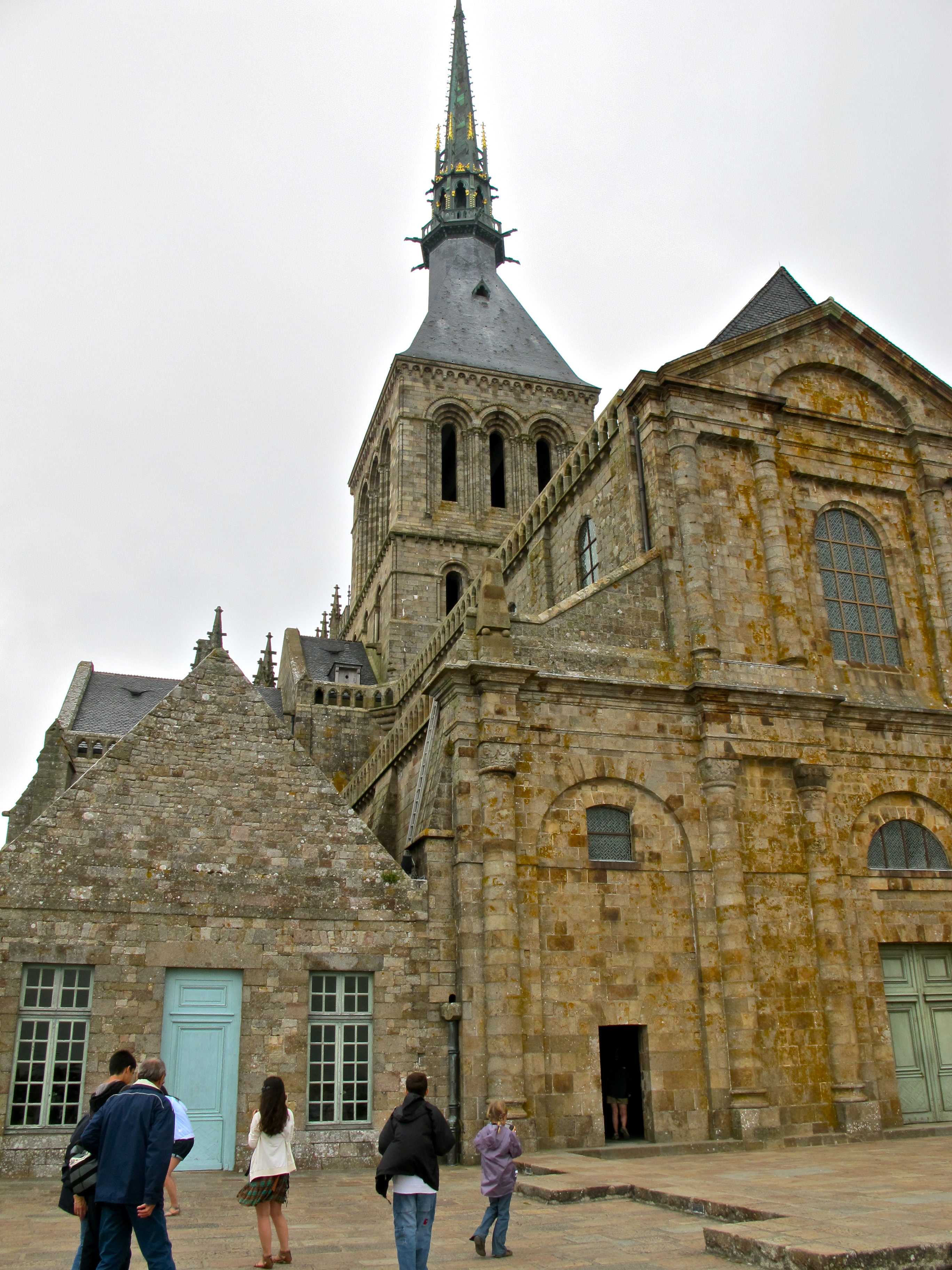
The present entrance is
the left portal, and the exit is through the right portal.

Internally,
the semi-circular nave arches support a triforium
gallery,
with clerestory
windows
above. A column rises vertically from the ground up to the barrel
vault roof (the barrel vault appears a bit further on).

Note
that the columns stop
at the roof line. The barrel vault, held together with
tie rods. Research might reveal their time of insertion.
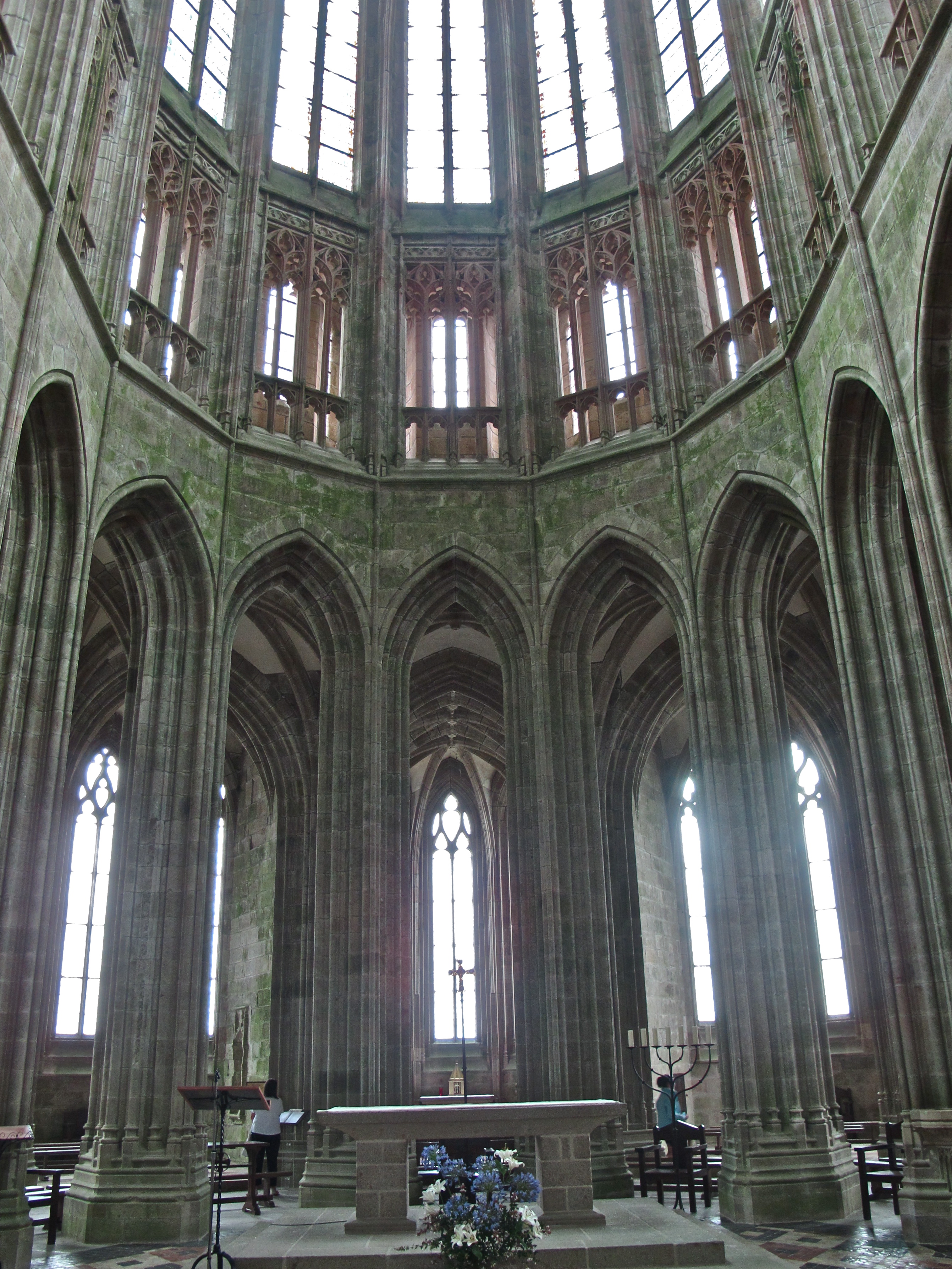
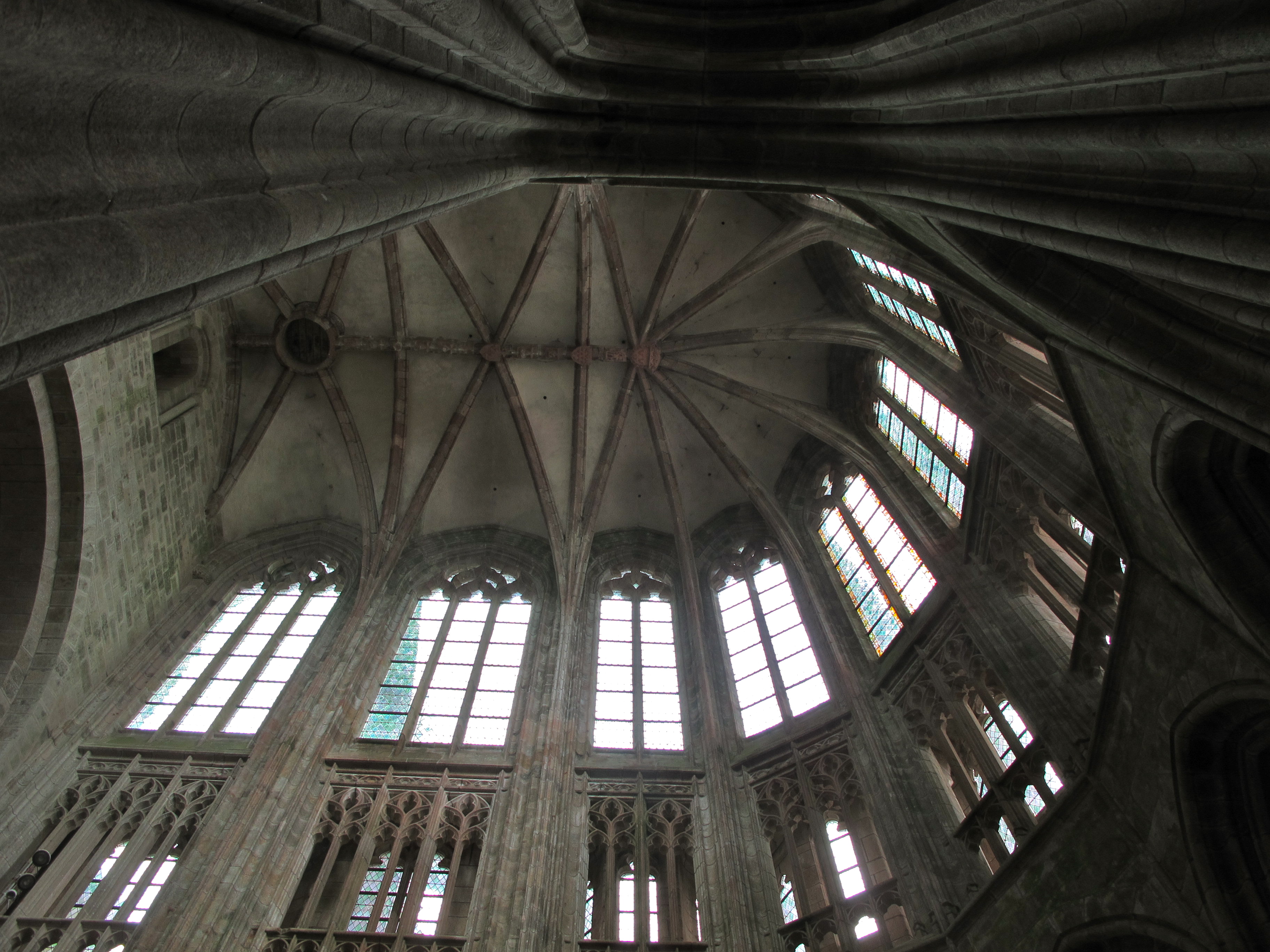
The semi-circular apse,
which is so very bright, was done in the Gothic period, the 15th
century. Some additional work continued into the 16th century. Note
the absence of wall, the thinness of the columns, and
the large amount of window area.

A groin vault out
of the Roman tradition here in what can probably be called Norman
Romanesque.
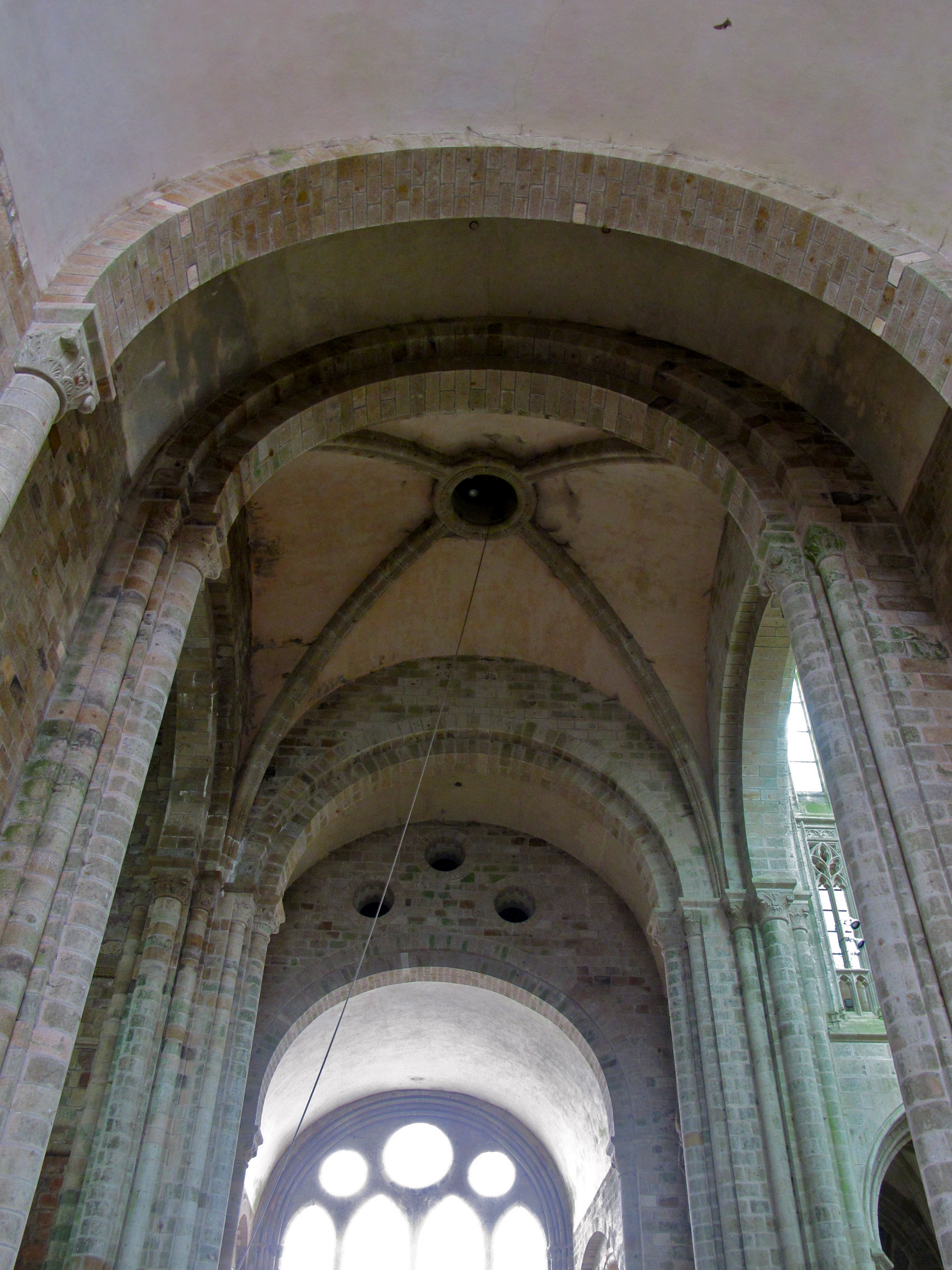
The rather odd-looking
open circular area above is the intersection of two diagonal ribs,
which make up the quadripartite vault. The circle serves as a
compression ring, taking forces from the four diagonal segments, and
being circular the forces just theoretically spin around. In highly
decorative design, such areas were disguised with all sorts of
sculptural pieces, sometimes gilded, referred to as "bosses.”
In England, particularly the Chapel of Henry VII at Westminster
Abbey, stone pendants descend spectacularly from such a spot (see
Chapter Ten below). Often a single stone might be slipped into place
upon completion of construction, to fill in the hole.
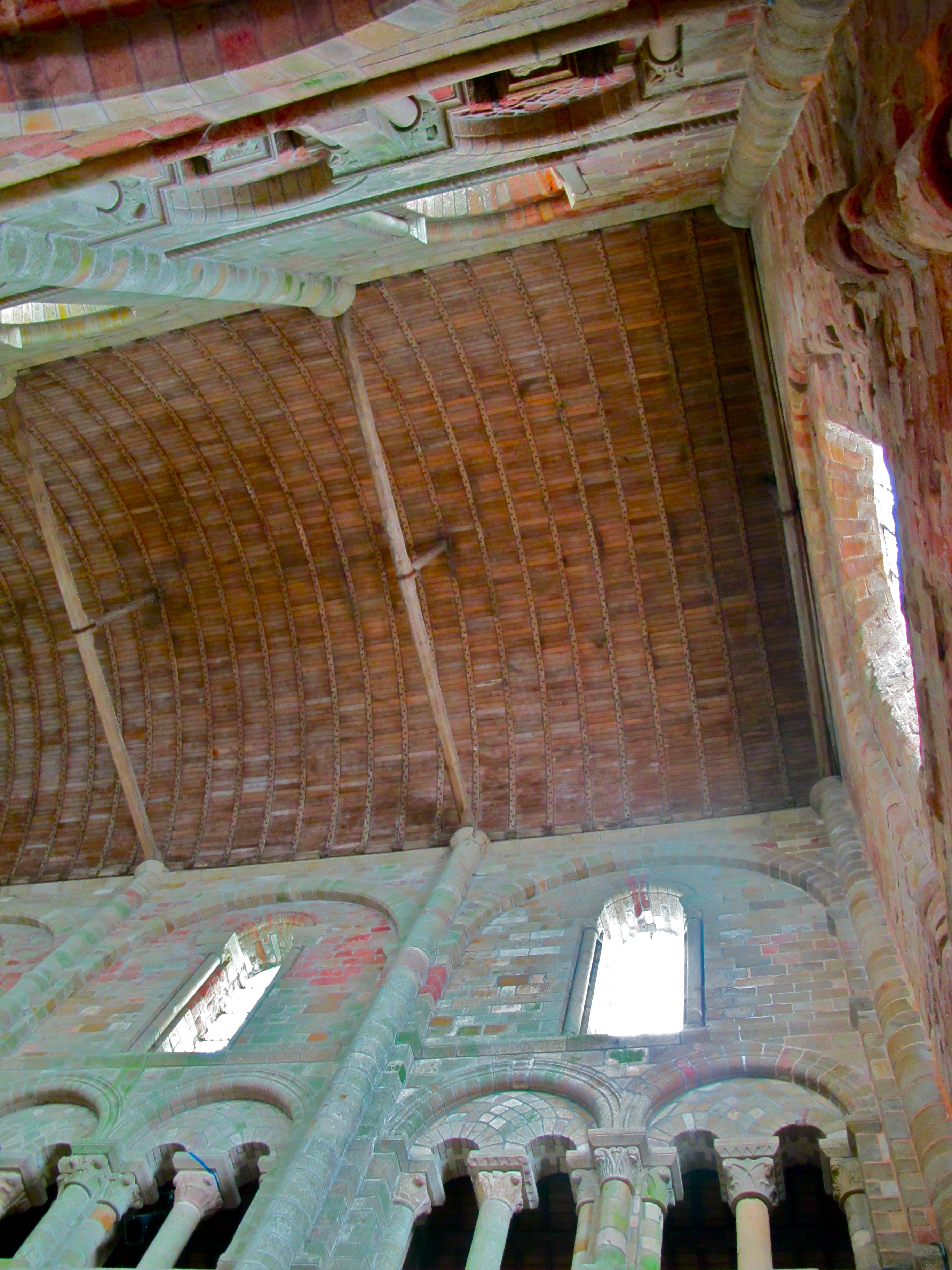
Here we view the barrel
vault of the roof. Note that the roof is of wood.



The cloister,
built from 1225 to 1228, is relatively small, but features two
hundred twenty delicate and graceful granite columns.

Adjacent to the cloister
is the refectory (dining room), which could have been used by
the monks and by pilgrims. Note another barrel vault ceiling
construction.

A detail of the wood
barrel vault.
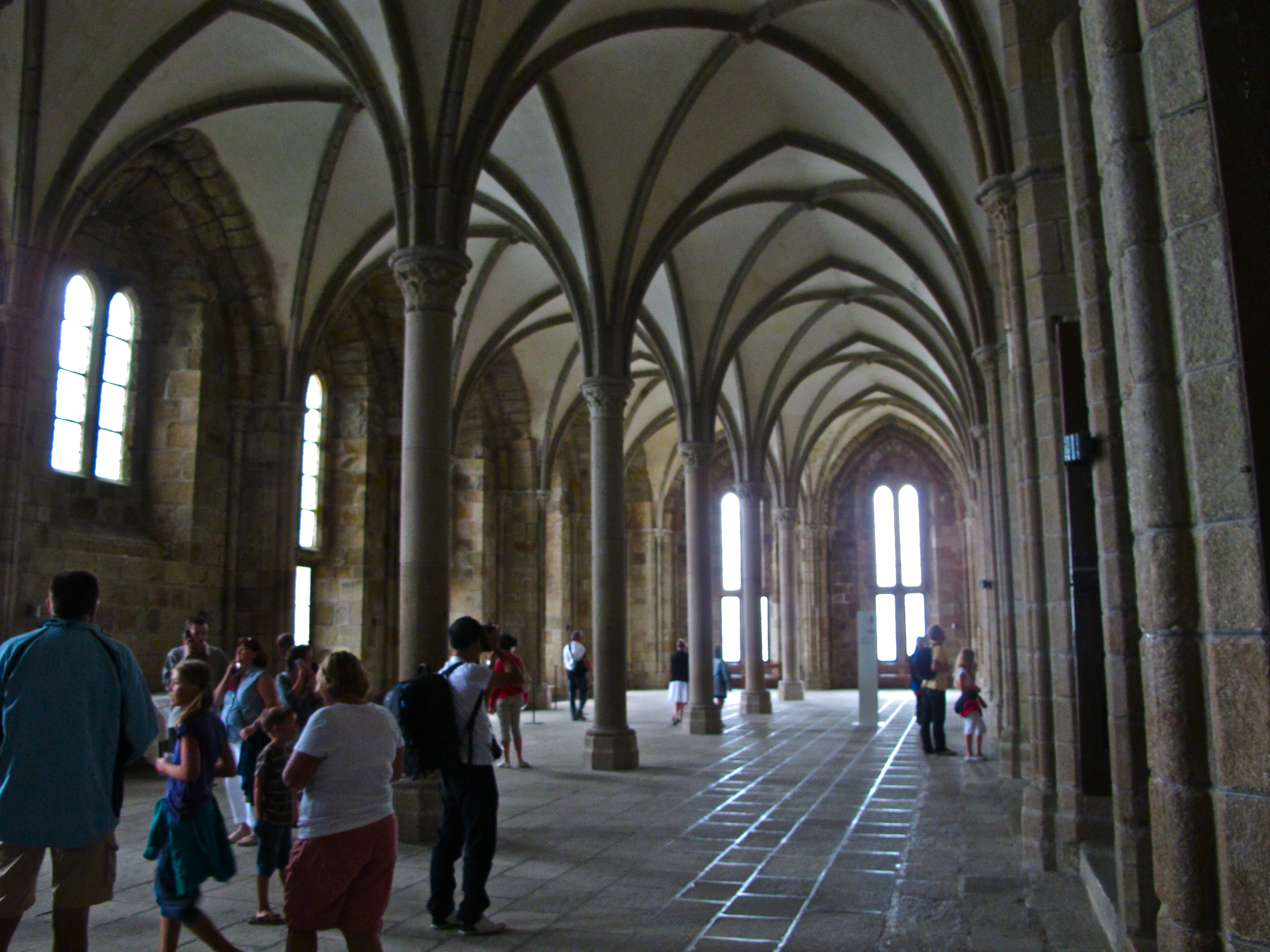

Pilgrims often spent the
night in a number of rooms here. The Romanesque and Gothic periods
were honest ones, architecturally. What you see is what the
building is made of. Highly articulated, exposed,
stone ribs interlace, mostly in groin vault configurations.
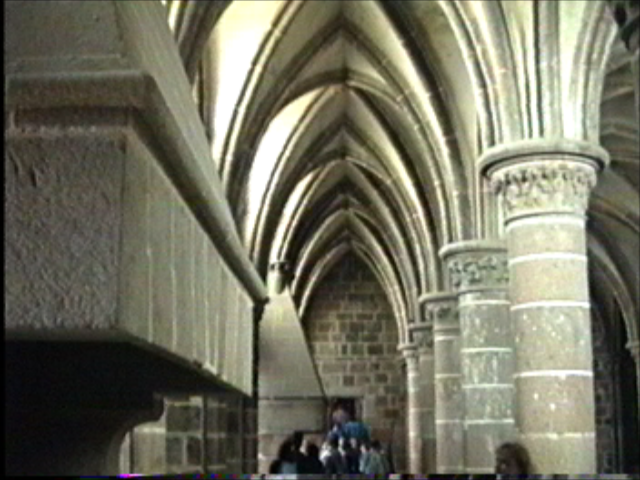
Pointed arches and a
"crease" running down above an aisle are Gothic in nature
(the local guides call this "Norman Gothic"),
showing the visual continuity achieved in that later period.
Now that we know a
little about how things developed from Medieval to Gothic, let’s
explore another conceptualization. In the quest for a “fireproof”
roof, stone vaulting had become the solution. A number of different
approaches appeared throughout France.
©
Architecture Past Present & Future - Edward D. Levinson, 2009




































